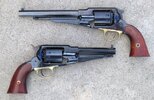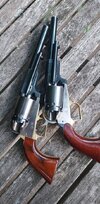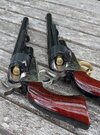Dave DeLaurant
Member
Again, my stance is that buying a cap 'n ball revolver, then buying an aftermarket swappable conversion cylinder is not worth it. It is only economically sound when you can buy them together.
I paid less than $400 for my Uberti and Howell combo. But that was because I found someone selling it for a loss.
It kinda/sorta makes better economic sense where I live, thanks to CA legislative weirdness. You won't get more for your money, but you may actually end up spending slightly less on some combo options than any centerfire factory SAA.
As of today anyway, I can order a percussion revolver and have both it and a Howell conversion cylinder delivered to my door in my locale. Shipping and "normal" state sales taxes apply, but not so the excise taxes, FFL fees and other expenses involved when buying through a licensed dealer here.
Shopping around, you can buy both and end up with a new revolver for six and a half bills. I did this a few months ago, ordering a Pietta 1858 "Sheriff" from Midway and a 5-shot .45 ACP cylinder directly from Howell The total was $602 plus tax and shipping.
A good used centerfire SAA revolver will run closer to $750-800 out the door at any gunshop around here. I know that because I priced several last week while doing a circuit with a friend. Even at that price, I'm tempted by a 3-screw Ruger in .30 Carbine I handled. I'll have to make up my mind soon because CA is adding a further 11% tax on firearms in July.
BTW, for me, Howell's 2-part 1858 conversion cylinders are close enough to original 2-part rimfire conversions to pass the smell test. Here's an original:
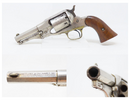
And here's one of my repro setups:
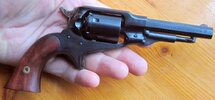
Having said all this, I don't think the drop-in conversion cylinder route is so hot with open-top Colts -- I'd personally much prefer going with a factory Richard's-type conversion job on one of those.
The 1858 solid-frame conversion cylinders are also a bit fiddly to handle. They are a tight fit into the frame, and I've found that it sometimes helps to roll the cylinder clockwise to get under the hand/pawl during insertion.
In short, for me conversion cylinders are more fun/interesting rather than practical/economical.
BTW, I got into these because I wanted something else to shoot the same light .45 Auto Rim loads I use in my shaved Mk VI Webley. I've counterbored my Howell's to accept the thick rim, and they have proven surprisingly accurate.
